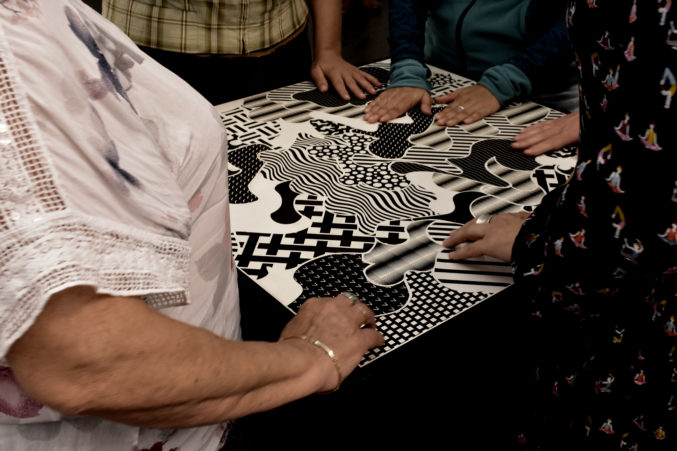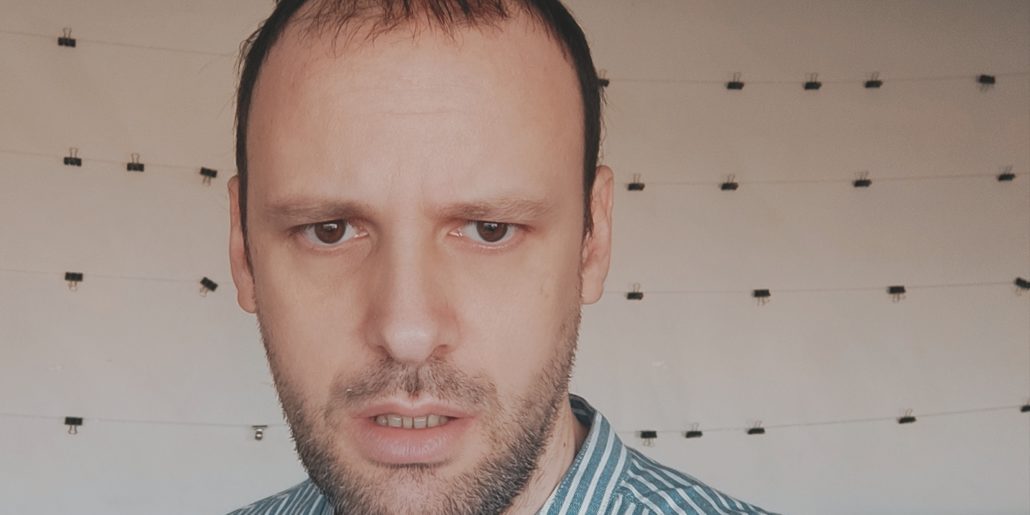Biography
Ilan Manouach is a multidisciplinary artist with a specific interest in conceptual and post-digital comics. His artistic work underlines the importance of comics as a materially self-reflexive medium, not affiliated with general art history. Ilan has more than twenty published works to his credit, and has had solo exhibitions at major festivals, and in museums and galleries around the world. His work has been featured in Hyperallergic, New York Magazine, World Literature Today, Wired, Le Monde, The Comics Journal, du9, 50 watts and Kenneth Goldsmith’s Wasting Time on the Internet. His work is also part of the online Ubuweb, a contemporary art archive.
Manouach is best known for Shapereader, a system of tactile stories built from tactile ideograms, and originally designed for blind and visually impaired readers and comic strip makers. Shapereader has been presented and discussed internationally within various formats and collaborations: contemporary art exhibitions in museums (MUSAC, Castilla), community workshops (Binyamin Gallery, Tel Aviv), artist talks (School of the Chicago Art Institute) and literary fairs.
Manouach also heads Futures of Comics, an international research program that examines how comics undergo historical mutations amid increasing financial and globalized technological opportunities.
In residentie Shapereader
31.01.2023 – 02.02.2023

First presented in 2016, Shapereader is a non-alphabetic communication system originally developed for communities of visually impaired people. Shapereader is built on a growing repertoire of tactile ideograms (tactigrams) that provide haptic equivalents for all the semantic features, the conceptual functions and the textual features of a story. As an elementary system of meaning making, Shapereader has a syntactic ability to connect tactile symbols with meanings. It is not bound by the specifics of ethnic and indigenous alphabets, or Braille code. The design is based on criteria of simplicity, ease of memorization and tactile distinguishability. Shapereader is aimed at all users, regardless of their nationality, language or education level; it transposes semantic and syntactic structure knowledge to the reader’s fingertips.
The recent Shapereader workshops in Madrid, Barcelona, San Sebastian and Ghent introduced Shapereader as a tactile system for alternative graphic notation in music. The workshops introduced participants to the tradition of graphic scores. They explored these traditions with concrete examples and explored the different ways in which composers have inflected language to foster new social/musical interaction systems. The participants then used Shapereader’s existing resources and collaboratively composed a vocal score that was performed in front of an audience.
Based on the implications of these initial evaluation workshops, I developed an interest in further exploring the haptic knowledge and tactile memory mechanisms involved in Shapereader, by scaling the works from the initial, intimate context, using the participants’ fingers activated into architectural dimensions that are potentially captivating throughout their bodies. The installation explores the conditions for synthesizing community experiences through embodied notions of materiality and performativity. It draws on the lineage of graphic scores in Western contemporary music and extends this tradition by activating a depository of tactile knowledge that frames the human body as a reading/writing interface with affective capabilities. Both a tactile score and a scenographic installation, this new Shapereader implementation promises a “secularized”, diversified, non-normative and embodied scoring device that has the capacity to strengthen chains of meanings that reflect the needs and desired uses of the community, as well as the need for a safe space for sonic experimentation for mixed groups of artists.

